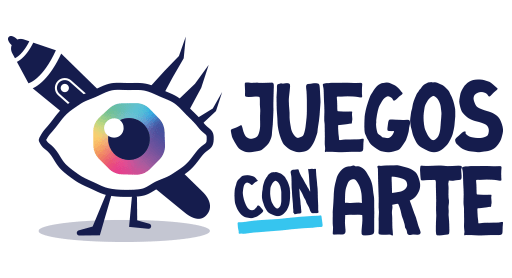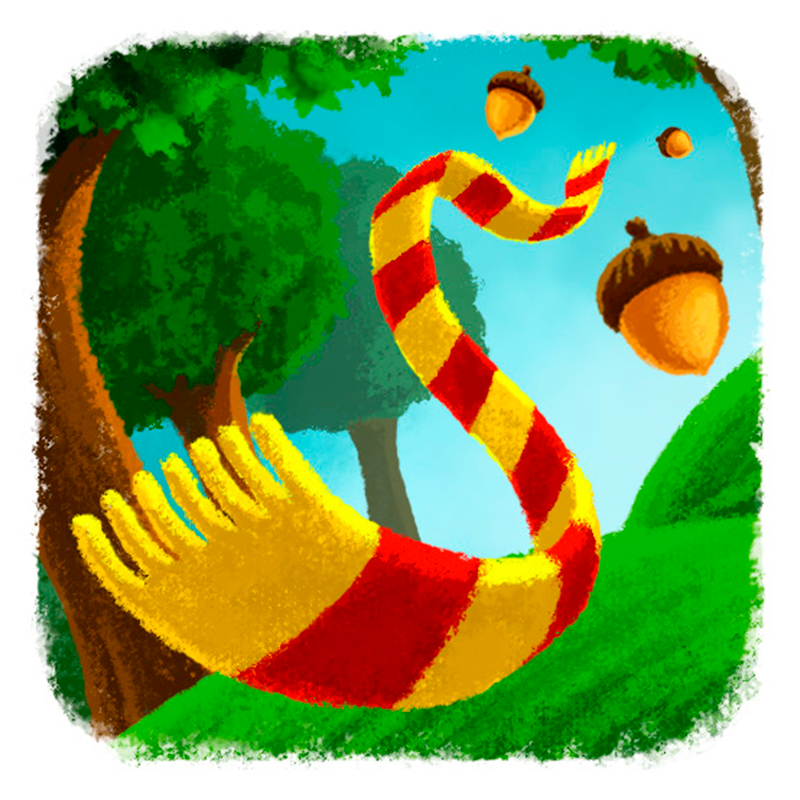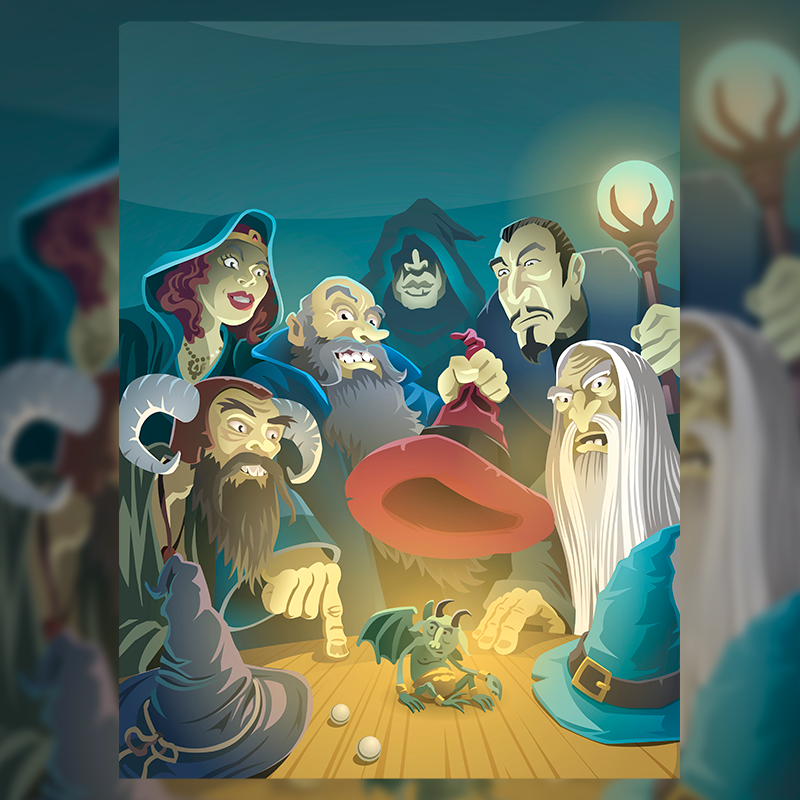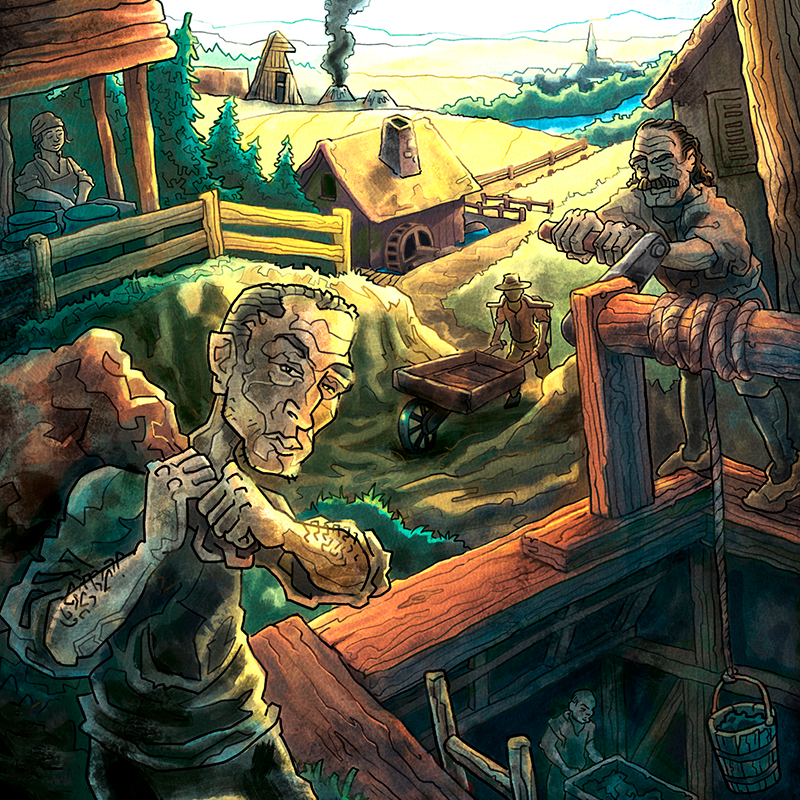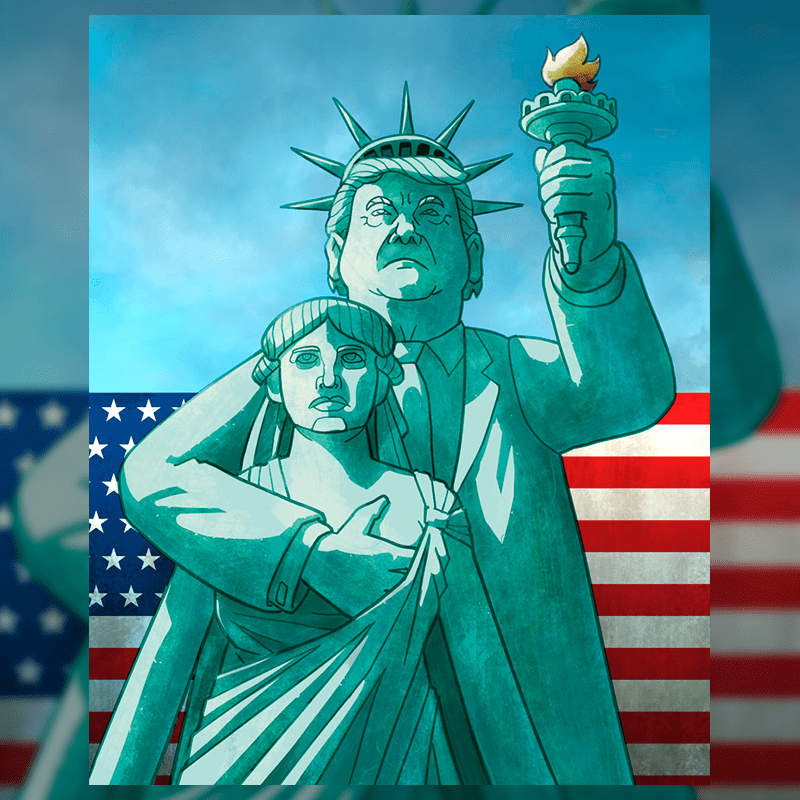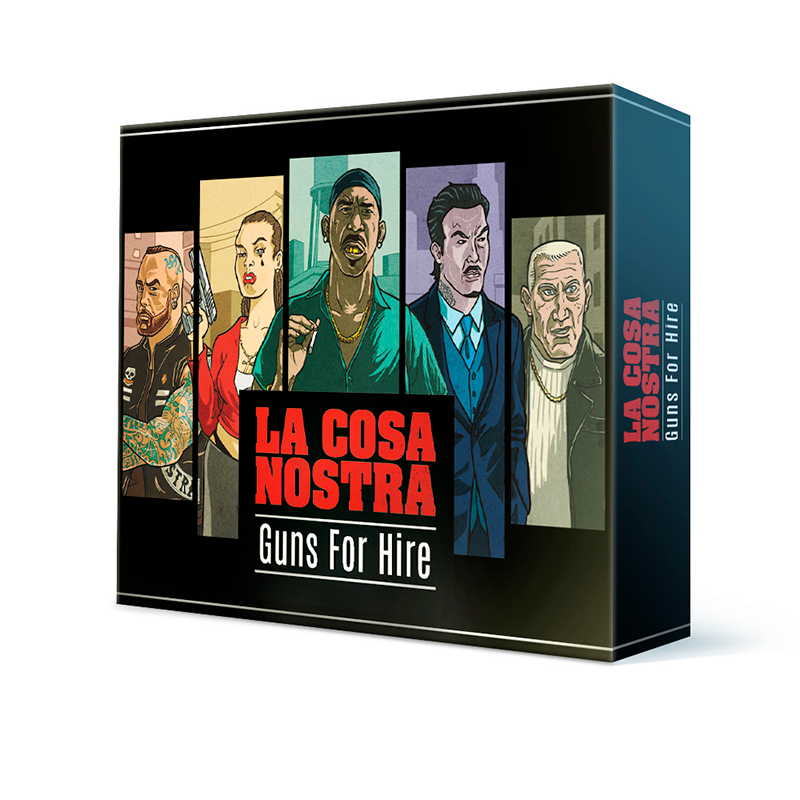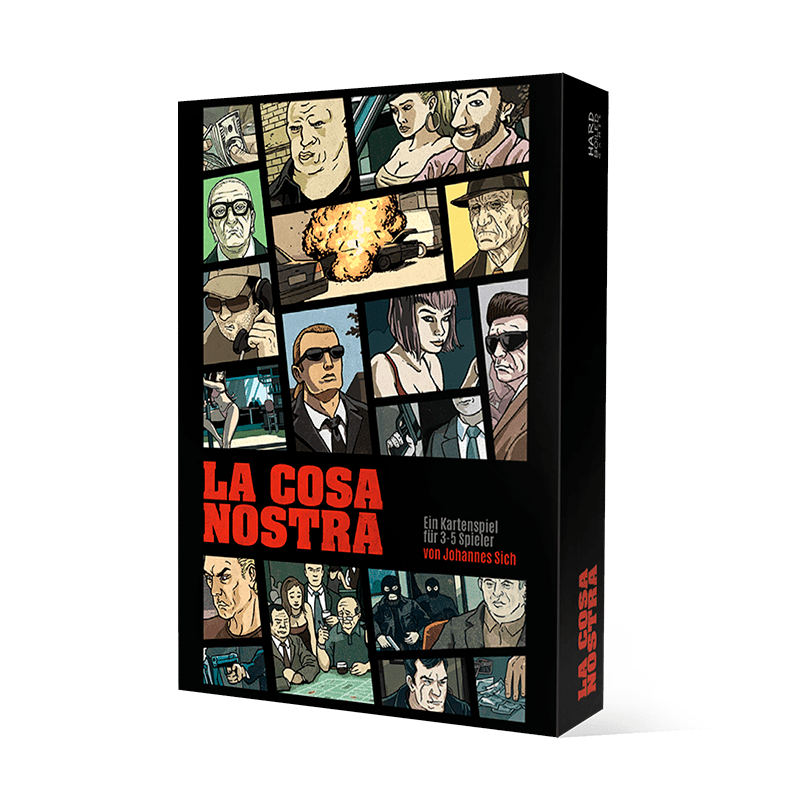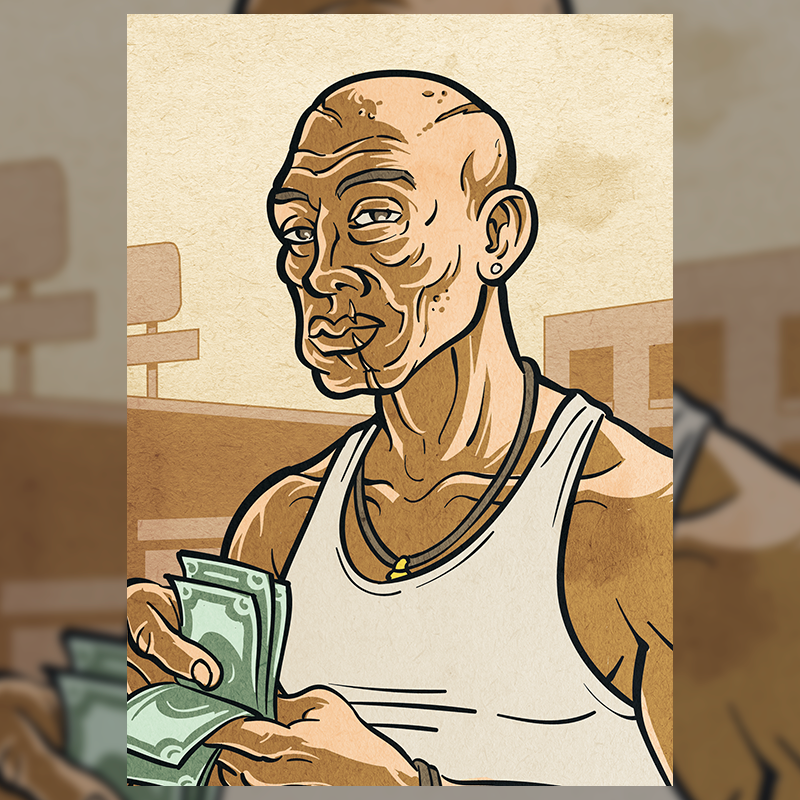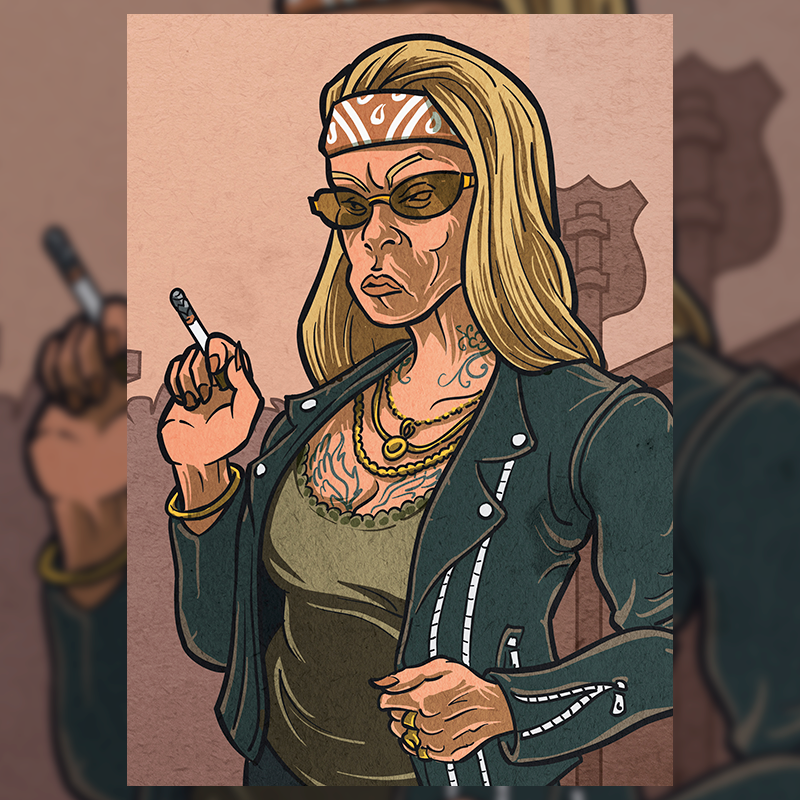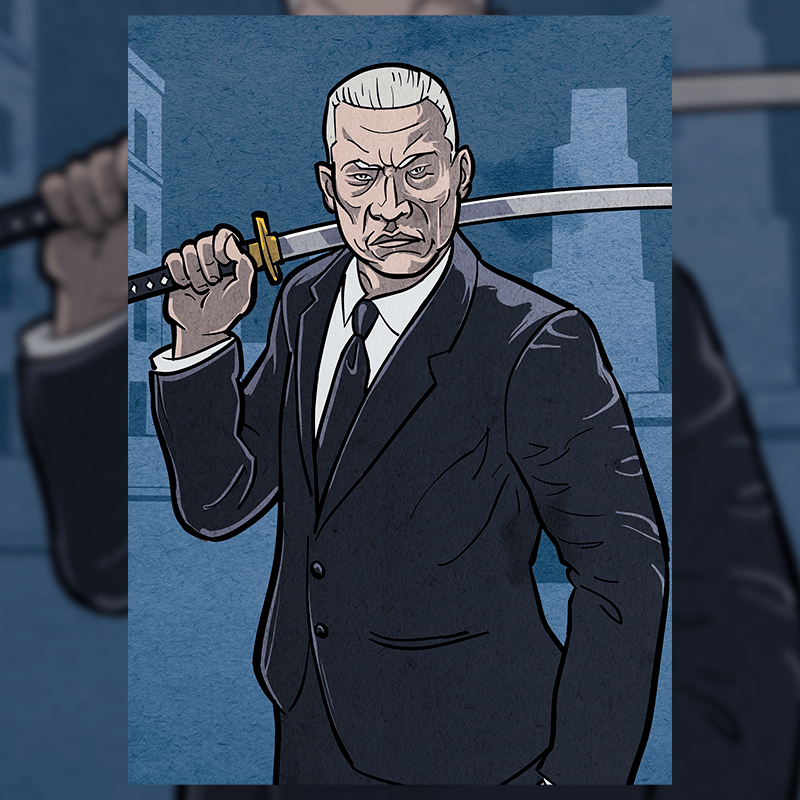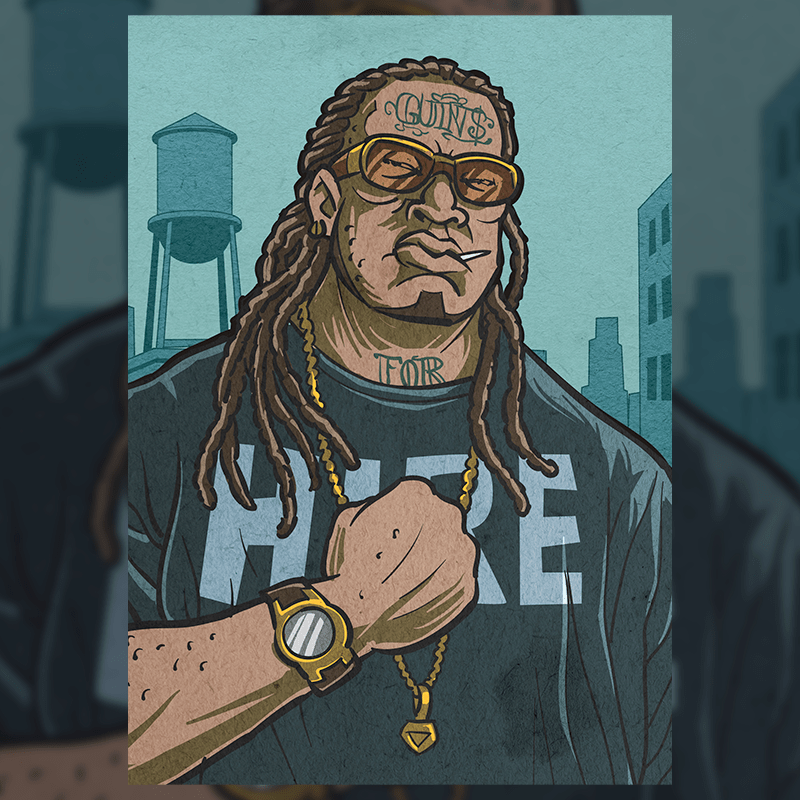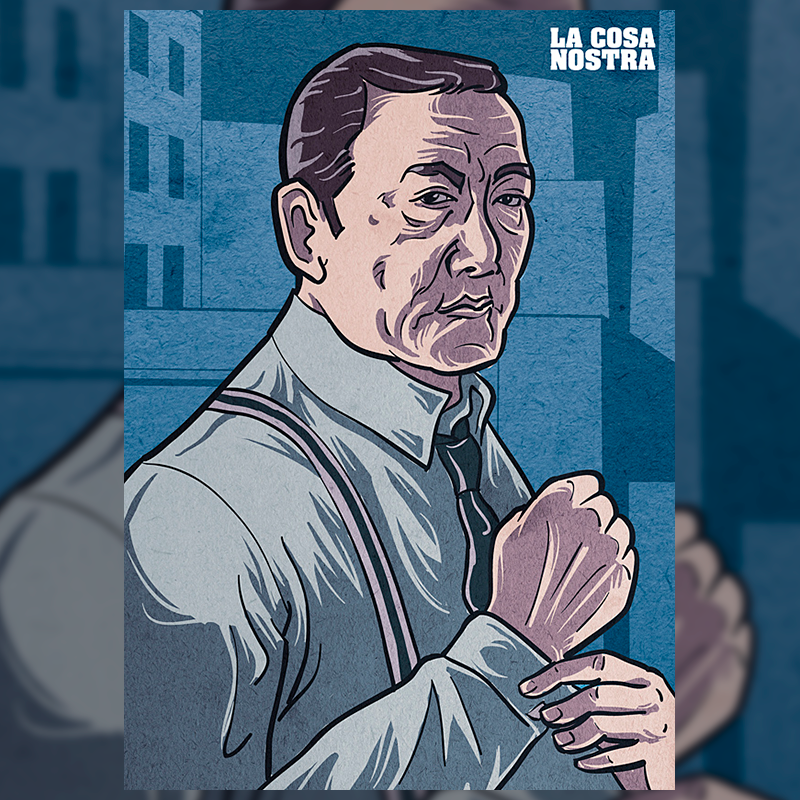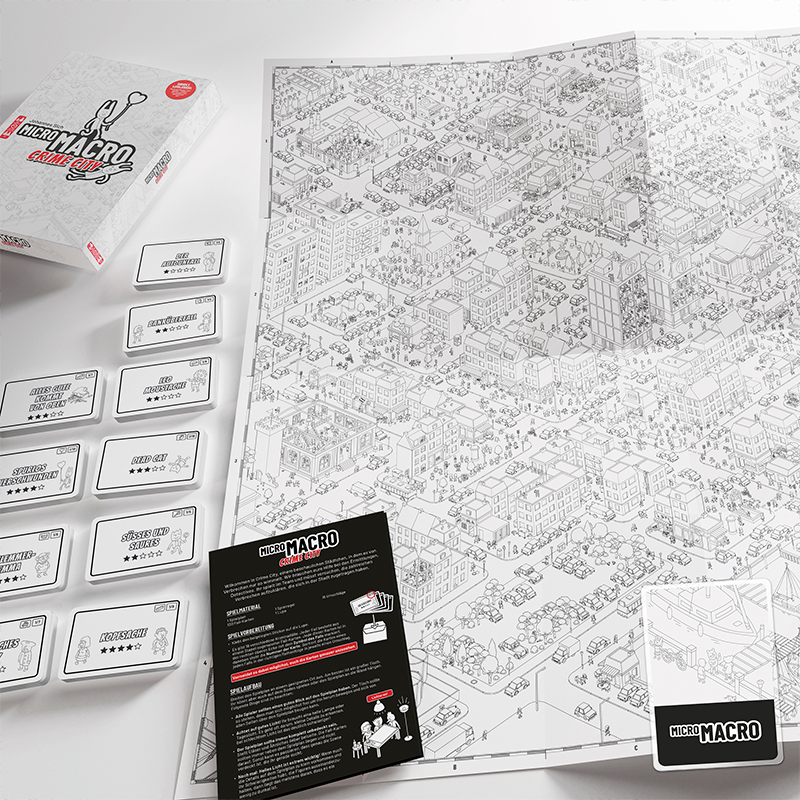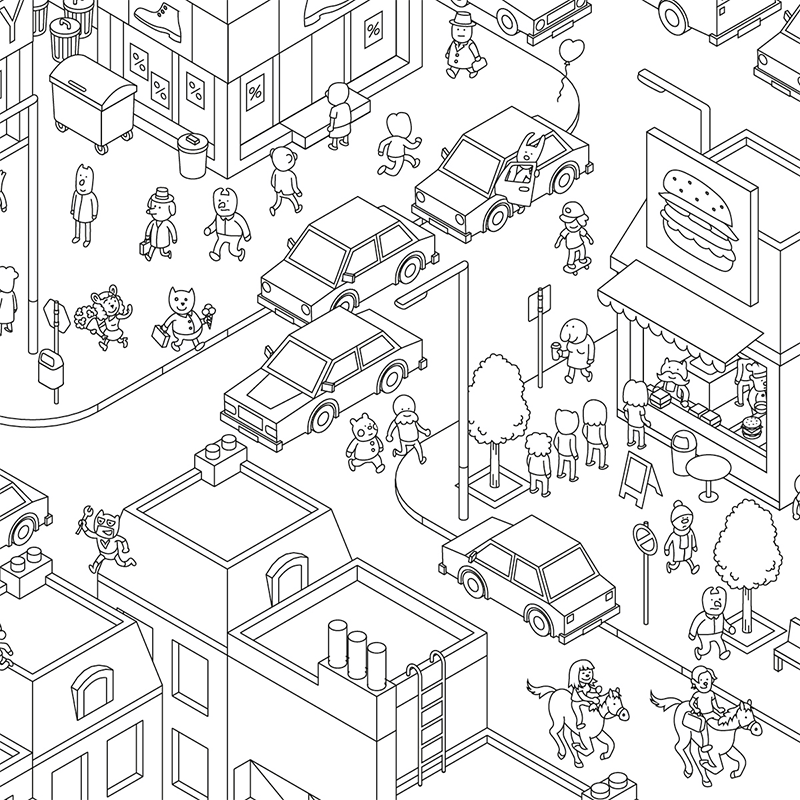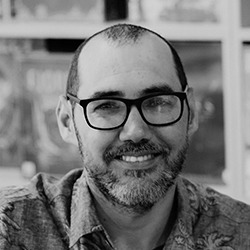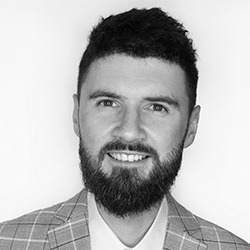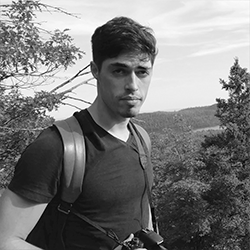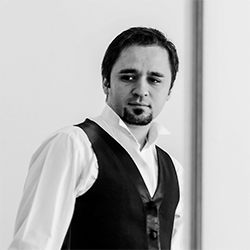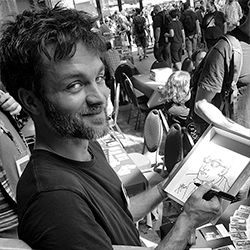
Acabamos el 2020 con la entrevista de Johannes Sich ilustrador y autor de los juegos de mesa La Cosa Nostra y de Micro Macro: Crime City.
ENG | How were your beginnings as an illustrator of board games and career?
During my studies in communication design in Düsseldorf I already worked as a freelance illustrator. After my studies, I did various internships and projects in illustration and animation studios, where I gained many insights into the areas of online games and mobile games. At times I did a lot of animation and even scripting for such games, but always came back to illustration. I always remained a freelancer and worked for various clients and projects, be it book covers, animation films or iOS games. Besides that I always spent a lot of my time on free projects and my own ideas. One of them was «La Cosa Nostra».
I chose the visual design of a game as the topic for my diploma. I was a big «Sopranos» fan at that time and played a lot of board games. That’s how the idea for an interactive, intensely themed card game with a story based on the mafia genre came up. This project was to keep me busy for several years after my diploma and lead me to found my own game publisher.
Through this I found many contacts in the board game scene and also worked as an illustrator for other game publishers. In the end, this was also the foundation for my last and so far biggest project: MicroMacro.
ESP | ¿Cómo fueron sus comienzos como ilustrador de juegos de mesa?
Durante mis estudios de diseño de comunicación en Düsseldorf ya trabajé como ilustrador independiente. Después de mis estudios, hice varias prácticas y proyectos en estudios de ilustración y animación, donde obtuve muchos conocimientos en las áreas de juegos en línea y juegos para móviles. A veces hice mucha animación e incluso guiones para tales juegos, pero siempre volví a la ilustración. Siempre me mantuve como autónomo y trabajé para varios clientes y proyectos, ya sea para portadas de libros, películas de animación o juegos iOS. Además de eso, siempre pasé mucho de mi tiempo en proyectos libres y mis propias ideas. Uno de ellos fue «La Cosa Nostra».
Elegí el diseño visual de un juego como tema para mi diploma. Era un gran fanático de los «Sopranos» en ese momento y jugaba muchos juegos de mesa. Así surgió la idea de un juego de cartas interactivo, de temática intensa, con una historia basada en el género mafioso. Este proyecto fue para mantenerme ocupado durante varios años después de mi diploma y me llevó a fundar mi propio editor de juegos.
A través de esto encontré muchos contactos en la escena de los juegos de mesa y también trabajé como ilustrador para otros editores de juegos. Al final, esta fue también la base de mi último y hasta ahora mayor proyecto: MicroMacro.
ENG | What is your favorite artistic technique?
This is a good question. I think that as an illustrator I use an unusually wide range of techniques, styles and genres.
This can be both an advantage and a disadvantage. On the one hand, it gives me a broad repertoire and allows me to serve a wide range of style requirements. On the other hand, it is also more difficult to get jobs, especially in the classic illustration field (magazines, editorial), because clients and agencies usually choose their illustrator based on their very own characteristic style.
But I always found trying out different things too interesting to focus on one style. So I have done everything from elaborate naturalistic Photoshop paintings to reduced vector drawings in the digital domain. 2D-animation and character design have also always played a big role. In the last years I also went back to traditional analog drawing techniques.
I think that, overall, I have always been most interested in designing characters and telling stories.
In my Instagram-Feed you can get a good overview of my work.
ESP | ¿Cuál es tu técnica artística favorita?¿Por qué?
Es una buena pregunta. Creo que como ilustrador utilizo una gama inusualmente amplia de técnicas, estilos y géneros.
Esto puede ser tanto una ventaja como una desventaja. Por un lado, me da un amplio repertorio y me permite servir a una amplia gama de requisitos de estilo. Por otro lado, también es más difícil conseguir trabajos, especialmente en el campo de la ilustración clásica (revistas, editorial), porque los clientes y las agencias suelen elegir a su ilustrador basándose en su propio estilo característico.
Pero siempre me pareció que probar diferentes cosas era demasiado interesante para centrarse en un solo estilo. Así que he hecho de todo, desde elaboradas pinturas naturalistas en Photoshop hasta dibujos vectoriales reducidos en el dominio digital. La animación en 2D y el diseño de personajes también han jugado siempre un gran papel. En los últimos años también volví a las técnicas tradicionales de dibujo analógico.
Creo que, en general, siempre he estado más interesado en el diseño de personajes y en contar historias.
En mi Instagram-Feed puedes obtener una buena visión general de mi trabajo.
ENG | You are the author and illustrator of La Cosa Nostra. What can you tell us about the project and how was its creation process?
La Cosa Nostra was originally my diploma project in communication design.
While this project was only about the visual design, the illustrations and the graphic design, I was fascinated to develop the rules and regulations myself.
I thought it would be relatively easy to create an incomparably brilliant game that would draw the player into the dark world of the mafia genre á la Sopranos, The Godfather or Goodfellas.
During the development I learned that it is not easy at all. That the development of a real board game is a job in its own right, and one that takes a lot of effort to learn. It took 5 years until the game was really finished.
At the same time I worked together with my friend and colleague Daniel Goll on the visual design of the game. While I concentrated on the illustrations, Daniel created the design concepts and layouts.
During this time there were of course a lot of prototype test games, at first rather with friends and acquaintances, but then we also went out to game meetings and game conventions. There we got hard feedback and the rules were revised many times. At the same time, we gained our first fans, who would later become the basis for our release via crowdfunding.
In 2014 we started this crowdfunding campaign – also a very extensive project with many ups and downs. It was a success and at the games fair in Essen, the game was finally (self-)published. Since then, it has established itself as a niche game and gained a large fan base. In the meantime it has been reproduced several times and in 2017 the expansion «Guns For Hire» was released, which was also realized as a kickstarter project.
ESP | Eres el autor e ilustrador de La Cosa Nostra ¿Qué nos puedes contar del proyecto y cómo fue su proceso de creación?
La Cosa Nostra fue originalmente mi proyecto de diploma en diseño de comunicación.
Mientras que este proyecto era sólo sobre el diseño visual, las ilustraciones y el diseño gráfico, me fascinó desarrollar las normas y reglamentos yo mismo.
Pensé que sería relativamente fácil crear un juego incomparablemente brillante que llevara al jugador al oscuro mundo del género mafioso á la Sopranos, El Padrino o Los Buenos Muchachos.
Durante el desarrollo aprendí que no es nada fácil. Que el desarrollo de un verdadero juego de mesa es un trabajo en sí mismo, y que requiere mucho esfuerzo para aprender. Tomó 5 años hasta que el juego estuvo realmente terminado.
Al mismo tiempo trabajé junto con mi amigo y colega Daniel Goll en el diseño visual del juego. Mientras yo me concentraba en las ilustraciones, Daniel creaba los conceptos de diseño y los diseños.
Durante este tiempo hubo, por supuesto, un montón de prototipos de juegos de prueba, al principio más bien con amigos y conocidos, pero luego también salimos a reuniones de juego y convenciones de juego. Allí recibimos comentarios duros y las reglas fueron revisadas muchas veces. Al mismo tiempo, conseguimos nuestros primeros fans, que más tarde se convertirían en la base de nuestro lanzamiento a través de la financiación pública.
En 2014 comenzamos esta campaña de crowdfunding, también un proyecto muy extenso con muchos altibajos. Fue un éxito y en la feria de juegos de Essen, el juego fue finalmente (auto)publicado. Desde entonces, se ha establecido como un juego de nicho y ha ganado una gran base de fans. Mientras tanto, se ha reproducido varias veces y en 2017 se lanzó la expansión «Guns For Hire», que también se realizó como proyecto inicial.
ENG | How was the creation and inspiration for the characters/gangsters of La Cosa Nostra?
The character design of the Gangsters was what I enjoyed the most.
The inspiration for the characters came from very different directions: Some are inspired by movie characters, some are based on celebrities from public life, some are real people I have met in my everyday life, and some come from my imagination. Five of the gangsters are also drawn after real people, they are fans of La Cosa Nostra – the highest pledge level in our crowdfunding campaign was «You as a ganster – your photo is used as a template for a gangster in the game»!
ESP | ¿Cómo fue la creación e inspiración para los personajes/gánsteres de La Cosa Nostra?
El diseño del personaje de los Gangsters fue lo que más me gustó.
La inspiración para los personajes vino de direcciones muy diferentes: Algunos se inspiran en personajes de películas, otros se basan en celebridades de la vida pública, otros son personas reales que he conocido en mi vida cotidiana, y otros vienen de mi imaginación. Cinco de los gángsters también se inspiran en personas reales, son fans de La Cosa Nostra – el nivel de compromiso más alto en nuestra campaña de financiación fue «Tú como gángster – tu foto se utiliza como plantilla para un gángster en el juego»!

ENG | One of your latest works is MicroMacro. What challenges and peculiarities has the creation of all the inhabitants of Crime City had?
MicroMacro is a joint project with Daniel Goll and Tobias Jochinke. We know each other from our studies and have been close friends ever since. We are always working on joint projects.
In the beginning, the biggest challenge was to thoroughly test the game concept as such. Normally you do these alpha tests with very rudimentary prototypes – because usually you learn quite quickly through the first tests that you have to do everything differently anyway. With MicroMacro, however, this approach contradicted the basic principle of the game, so to speak – because the elaborate richness of detail in the huge illustration is precisely the core of the game. So the very first test required quite a lot of graphic preparation.
After the basic game principle had proven its potential for fun in initial tests, we successively developed more and more cases. While the city slowly filled up with more and more stories, characters and buildings, we developed the mechanics of the case cards in parallel.
We constantly made test games with different groups. Each case was played many times and revised over and over again, for which sometimes whole districts had to be rebuilt. When we were just in the last test phase, we… Corona. Suddenly it was no longer possible to meet people, visit other apartments and such. So we developed a handful of prototypes, which we sent by mail to couples and shared flats so that they could test the game at home. We then watched via video conferencing, which allowed us to gain valuable insights for the final fine-tuning.
Fortunately we didn’t have to take care of the publishing work ourselves this time – with @spielwiese_berlin and @pegasusspiele we have found a great partner for publishing and distribution.
The sheer size of the map and the abundance of elements grew into an ever-increasing challenge. In order to create and manage the countless different objects, we developed a sophisticated system, also with an eye to the future – a system that would also make it easier to create new cities. Because MicroMacro is planned as a series. We are already working on a new city with new cases for the second edition! 🙂
ESP | Uno de tus últimos trabajos es MicroMacro. ¿Qué desafíos y peculiaridades ha tenido la creación de todos los habitantes de Crime City?
MicroMacro es un proyecto conjunto con Daniel Goll y Tobias Jochinke. Nos conocemos de nuestros estudios y somos amigos íntimos desde entonces. Siempre estamos trabajando en proyectos conjuntos.
Al principio, el mayor desafío fue probar a fondo el concepto del juego como tal. Normalmente se hacen estas pruebas alfa con prototipos muy rudimentarios – porque normalmente se aprende bastante rápido a través de las primeras pruebas que hay que hacer todo de manera diferente de todos modos. Sin embargo, con MicroMacro, este enfoque contradijo el principio básico del juego, por así decirlo, porque la elaborada riqueza de detalles de la enorme ilustración es precisamente el núcleo del juego. Así que la primera prueba requirió bastante preparación gráfica.
Después de que el principio básico del juego demostrara su potencial de diversión en las pruebas iniciales, desarrollamos sucesivamente más y más casos. Mientras la ciudad se llenaba lentamente de más y más historias, personajes y edificios, desarrollamos la mecánica de las cartas de los casos en paralelo.
Constantemente hicimos juegos de prueba con diferentes grupos. Cada caso se jugaba muchas veces y se revisaba una y otra vez, para lo cual a veces había que reconstruir distritos enteros. Cuando estábamos en la última fase de prueba… Corona. De repente ya no era posible conocer gente, visitar otros apartamentos y cosas así. Así que desarrollamos un puñado de prototipos, que enviamos por correo a parejas y pisos compartidos para que pudieran probar el juego en casa. Luego lo vimos por videoconferencia, lo que nos permitió obtener valiosos conocimientos para el ajuste final.
Afortunadamente, esta vez no tuvimos que encargarnos nosotros mismos del trabajo de publicación – con @spielwiese_berlin y @pegasusspiele hemos encontrado un gran socio para la publicación y distribución.
El gran tamaño del mapa y la abundancia de elementos se convirtieron en un reto cada vez mayor. Para crear y gestionar los innumerables objetos diferentes, desarrollamos un sistema sofisticado, también con vistas al futuro, un sistema que también facilitaría la creación de nuevas ciudades. Porque MicroMacro está planeado como una serie. Ya estamos trabajando en una nueva ciudad con nuevos casos para la segunda edición. 🙂
ENG | And the last question, what projects are you currently working on?
Currently I’m working almost exclusively on the next issue of MicroMacro. The game was planned as a series from the beginning, and the overwhelming success of the first edition shows that there will be many more editions. At the moment we are working on a new city map with new cases!
Our notebooks are full of more ideas, and we are looking forward to implementing them.
Really, MicroMacro is the most beautiful project I have ever done. Developing stories and puzzles, designing characters and creating whole worlds, that’s what I always wanted to do. Moreover, our team is great and working together is great fun. And that the game is so successful and popular is of course incredibly motivating.
If I still have time left over, I’m working on my next own project: a graphic novel. It will be a psychedelic fantasy hard-boiled detective Berlin love story. It’s a lot of fun, but also here I realize that writing a classic story is a very special job, which you have to learn with a lot of effort… 😉
ESP | Y la última pregunta, ¿en qué proyectos está trabajando actualmente?
Actualmente estoy trabajando casi exclusivamente en el próximo número de MicroMacro. El juego fue planeado como una serie desde el principio, y el éxito abrumador de la primera edición muestra que habrá muchas más ediciones. En este momento estamos trabajando en un nuevo mapa de la ciudad con nuevos casos!
Nuestros cuadernos están llenos de más ideas, y estamos deseando ponerlas en práctica.
Realmente, MicroMacro es el proyecto más hermoso que he hecho. Desarrollar historias y puzzles, diseñar personajes y crear mundos enteros, es lo que siempre quise hacer. Además, nuestro equipo es genial y trabajar juntos es muy divertido. Y que el juego tenga tanto éxito y sea tan popular es, por supuesto, increíblemente motivador.
Si todavía me queda tiempo, estoy trabajando en mi próximo proyecto: una novela gráfica. Será una fantasía psicodélica, una dura historia de amor de un detective berlinés. Es muy divertido, pero también aquí me doy cuenta de que escribir una historia clásica es un trabajo muy especial, que tienes que aprender con mucho esfuerzo… 😉
(Todas las imágenes cedidas por Johannes Sich)

